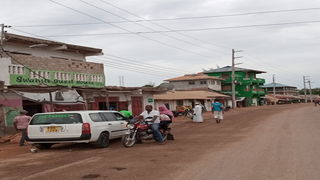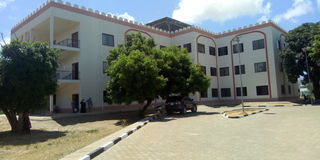Breaking: Autopsy reveals how Cyrus Jirongo died

Mokowe Town in Lamu, which has since risen to become the region's headquarters.
| Kalume Kazungu I Nation Media GroupLamu
Premium
Mokowe rising: From a bushy outcrop to Lamu's economic hub
Until recently, little was known about Mokowe, a tiny settlement on the Lamu-Witu-Garsen highway whose inhabitants keep livestock and work on land.
The town sits about 3.5km from the Mokowe Jetty, the only drop-off and pick-up point for travellers leaving and entering Lamu island and the rest of the Lamu archipelago.
Decades ago, it was a lonely outcrop.
It was a bushy area teeming with wild animals, and that dissuaded people from setting up homes there.
In 1964, the Bajuni community from the Mwathi and Barani areas of Kiunga, on the border with Somalia, fled the Shifta War and sought refuge in Mokowe.
They were later joined by pastoralist communities, including the Somali, Orma and Sanye from Koreni in Lamu West, who were also escaping Shifta insecurity in their areas.
And that is how Mokowe town started to sprout.
Today, Mokowe is Lamu’s bursting economic, administrative and industrial hub.
It is also home to almost all the mega projects undertaken by the county and national governments, including the Lamu port, a key component of the Sh2.5 trillion Lamu Port-South Sudan-Ethiopia Transport (Lapsset) corridor project.
Another major milestone that has boosted Mokowe's profile is the recent shifting of major county and national government offices from Lamu island to Mokowe in the mainland.
The Sh284 million Lamu County headquarters, the Sh214 million Lamu County Assembly building and the County commissioner's state-of-the-art offices are in Mokowe.
These developments have drawn major investors and entrepreneurs to the area. The town is generating a huge buzz, with many traders and businesses shifting base from Lamu Old Town.
Elder and historian Mohamed Mbwana noted that Mokowe has in recent years become one of the most liked and targeted areas by investors and speculators in Lamu.
He recalled that Mokowe had no roads in the old days.
The area was generally bushy and hard to access and that only farmers and herders settled there.
“The Shifta War refugees, including the Bajuni, who were farmers, and the pastoralist Somali and Sanye were the only ones who established settlements in Mokowe,” he said.
“We are thankful that today, Mokowe is the home of the Lamu port. It also houses the county headquarters as well as the national government administrative offices. Mokowe is the most liked town today."

County Government of Lamu headquarters at Mokowe.
The town now has well-established and defined road networks, bringing it to life as many homes have sprung up.
Real estate businesses and hotels are among the ventures that are performing well as all administrative offices and staff have been relocated there.
The value of land in the Mokowe area has also shot up by almost 10 times the previous valuation, Nation.Africa has learnt.
Lamu real estate agent Yusuf Osman said that before the establishment of various projects by the county and national governments in Mokowe, an acre would sell for as little as Sh10,000.
"Today, there is no piece of land of whichever size that can be bought with less than Sh1.5 million," he said.
Investor Omar Ahmed cited the decision to pay locals Sh1.5 million per acre of land that the national government purchased for the Lapsset project in 2015 as a key factor influencing land prices in the area in recent times.
"The move generally influenced land valuation in this area, Mokowe included, as most land owners currently prefer selling their lands at a higher price compared to the Sh1.5 million per acre that the government purchased for the Lapsset," Mr Ahmed said.
These developments have led a rise in encroachment on other people’s land by squatters and land-related conflicts.
Now the question is how Lamu Old Town, a Unesco World Heritage site, will cope with its new diminished status.
The National Museums of Kenya curator in charge of Lamu Museums and World Heritage Sites, Mohamed Mwenje, noted that moving administrative offices to Mokowe in the mainland will help the preservation of the culture and heritage of Lamu Old Town.
"I can say the shift is a plus to the preservation of the Lamu Old Town. It will reduce the development pressure within the old town as has been witnessed in recent years,” he said.
“People had begun scrambling for land to construct rental houses within Lamu Old Town that didn't conform with the historical town's architectural design.”
He adds: “They can now do that in Mokowe as all important functions have been moved there and leave the Old Town as it is."
Hassan Alwy, a private developer, expressed worry, however, had a different view.
Big hotels and rental houses in Lamu and Shella towns, he said, now have fewer guests as many have opted to rent space in Mokowe.
“The shift is enough indication that Lamu Old Town has been relegated from its position as a headquarters,” he said.





